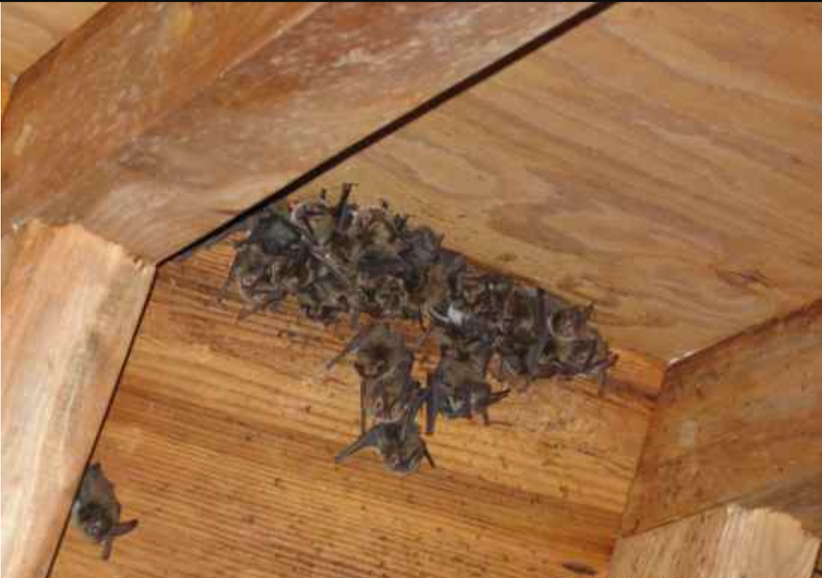Most bat invasions occur one of three ways:
Multiple bats living inside a structure
A single bat inside living space
Or bats loitering and flying around the exterior of a structure
The most common entry points for bats are through openings at the roof edge or valleys, eaves, the apex of the gable, chimney, attic or roof vent, dormers, and siding.

When outdoors, bats will roost behind shutters or where the siding and edge boards are properly joined or sealed. Bats will also roost on porches and patios, in garages, behind shingles or roof gutters. Bats can squeeze through the narrowest openings. This includes, but is not limited to loose-fitting doors, around windows, utility vents, or gaps around conduits such as wiring, plumbing, or air conditioning. If your structure has an older wood frame, where boards may have shrunk, warped, or loosened, it is likely that bats found their way in this way.
If you have a larger number of bats, guano (bat excrement) and urine may be visible. Guano produces an unpleasant odor as it decomposes in attics, wall spaces, and other voids. The pungent odor can usually be detected from outside a building containing a larger Bats urinate and defecate when exiting a roost which causes casues staining on sides of buildings and objects near entry and exit holes.
When removing bats, a non-lethal venting and eviction approach is not only preferred but also the most effective. It can be tedious to locate all active and potential openings available to bats, but we are skilled and efficient in both removing and preventing bats from reentering your structure.
Give us a call today! 315-383-9944
